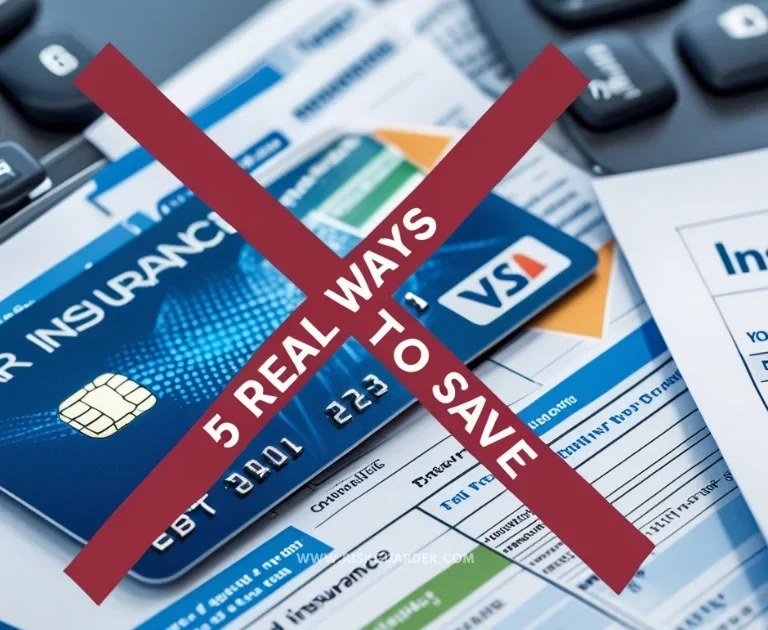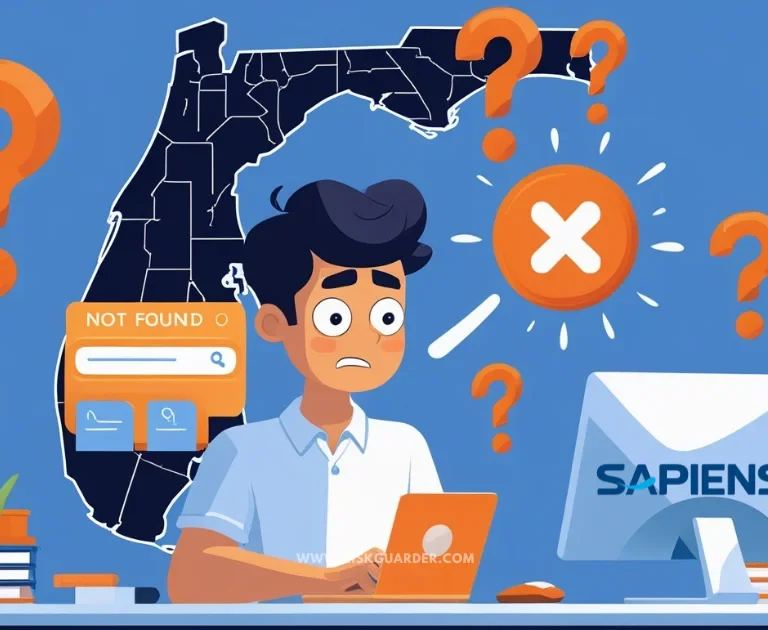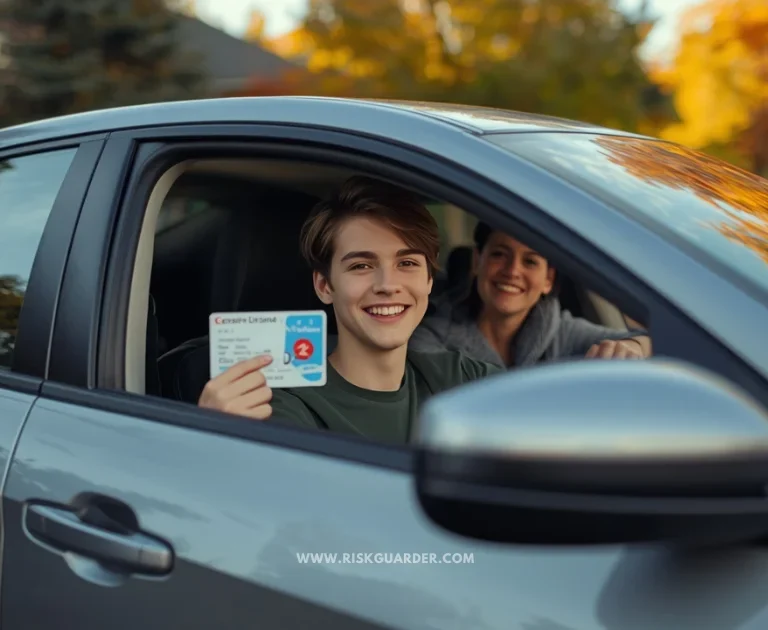Look, getting your car wrecked absolutely sucks. You’re already dealing with the accident stress, playing phone tag with insurance people, and wondering how you’re gonna get to work tomorrow. Then the adjuster drops the “total loss” bomb on you, and suddenly you’ve got a million new questions running through your head: Wait, is my car really totaled? Are they lowballing me? What can I even do about it?
Here’s the deal—if you’re in Arizona, you’ve got some specific rules working in your favor (and yeah, some working against you too). Unlike a bunch of other states that just pick some random percentage and call it a day, Arizona actually uses a real formula to figure out if your car’s toast. And honestly? Understanding this formula could literally put thousands of extra bucks in your pocket.
We’re breaking this down based on our usual approach at RiskGuarder Methodology —basically, we dig into the data and fight for you, not the insurance companies.
The Quick Facts: What Arizona Drivers Need to Know
The Arizona Rule: Arizona is a Total Loss Formula (TLF) state. Your vehicle is legally considered totaled when the cost to repair it plus the car’s salvage value equals or exceeds its actual cash value before the accident.
The Simple Math: (Repair Cost + Salvage Value) ≥ Actual Cash Value = Total Loss
The Legal Source: This determination is codified in Arizona Revised Statutes § 28-2091, which establishes the framework insurance companies must follow.
Your Key Right: You have the explicit right to dispute the insurance company’s valuation of your vehicle through the appraisal process.
What This Guide Delivers: We’ll break down the total loss formula component by component, show you exactly how to calculate whether your car meets the threshold, provide a step-by-step action plan for your claim, and arm you with the legal knowledge to negotiate from a position of strength.
Table of Contents
The Arizona Total Loss Calculator: Is Your Car Totaled?
Alright, let’s figure this out right now. You’ll wanna talk to your adjuster and maybe get a pro to look at it, but here’s a calculator that’ll give you the quick answer:
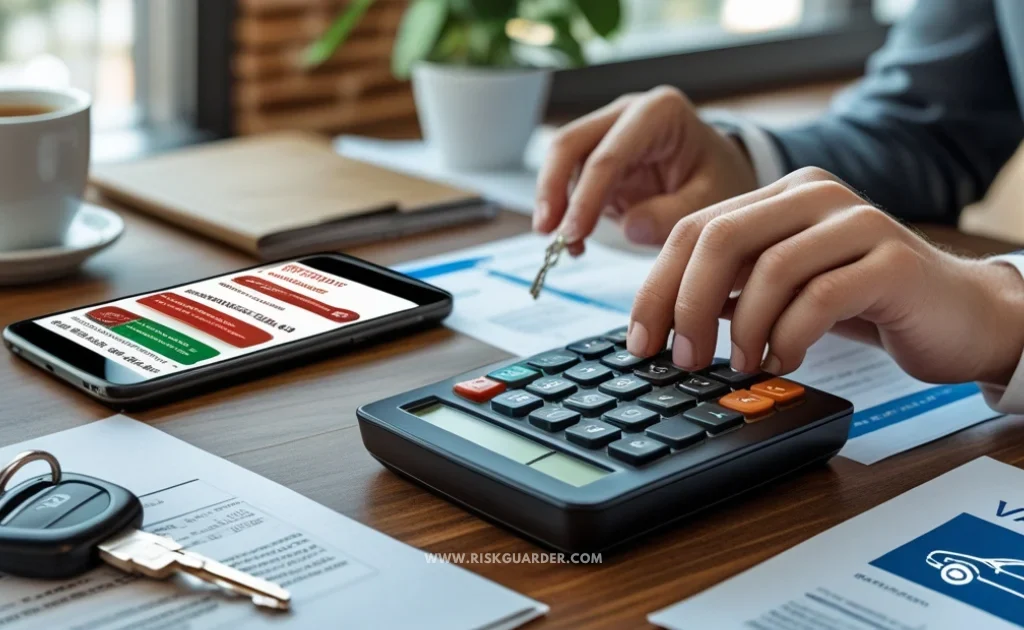
Interactive Calculator Framework:
What They Say Repairs Will Cost ($): _______ This is everything—parts, labor, all of it. Your adjuster or their repair shop will give you this number.
What Your Car Was Worth Before the Crash ($): _______ No clue? Hit up Kelley Blue Book (kbb.com) or NADA (nada.com) and look up cars like yours in your area.
What the Wreck’s Worth ($): _______ Usually somewhere between 25-40% of what your car was worth. If you’re guessing, go with 30%.
[Calculate Button]
Result Display:
- If (Repair Estimate + Salvage Value) ≥ ACV: “Based on Arizona’s Total Loss Formula, your vehicle likely meets the total loss threshold.”
- If (Repair Estimate + Salvage Value) < ACV: “Based on Arizona’s Total Loss Formula, your vehicle likely does not meet the total loss threshold and should be repairable.”
This calculator represents the mathematical reality of Arizona’s approach. Unlike states with fixed percentage thresholds like 75% or 80% of value, Arizona’s formula accounts for the economic salvage value, which fundamentally changes the calculation. A vehicle might be repairable in California but totaled in Arizona under identical damage scenarios because Arizona considers what the insurer can recover by selling the wreck.
Deconstructing the Formula: Understanding the “Big Three” Components
The arizona total loss formula boils down to three big numbers. Insurance companies have whole teams crunching these, and knowing what they’re doing gives you serious negotiating power.
What’s “Actual Cash Value” Anyway?
Okay, so Actual Cash Value (ACV) is basically what your car was worth the second before someone hit it. Not what you paid for it back in the day, not what you still owe on it, and definitely not what a brand new one costs. It’s the real-world, “what could I sell this for today” number.
Insurance folks figure this out using sites like Kelley Blue Book and NADA—same ones you’d use if you were selling your car. They punch in your year, make, model, mileage, and condition, then tweak it for extras like leather seats or that fancy sound system you installed. They’ll also dock you for stuff like dings, scratches, or if your check engine light’s been on since 2019.
Here’s where it gets interesting though—there’s a LOT of wiggle room in these calculations. Sure, they pull the base number from a database, but then some adjuster’s deciding if your car’s “good” or just “fair” condition. And that one little judgment call? Could cost you hundreds or even thousands of dollars. This is exactly where you can push back.
Also, location matters more than you’d think. A 2019 Camry in Phoenix might be worth different money than the same car in Tucson. They should be using local sales data, not some statewide average that screws you over.
What About Repair Costs?
This one’s pretty straightforward—it’s what it’d cost to fix your car back to how it was. Parts (either original or aftermarket, depending on your policy), labor, paint, and any surprise issues like frame damage or electrical gremlins.
Insurance companies get these estimates a few ways. Sometimes their own people come look at your car and use fancy databases like CCC ONE to price everything out. Other times they’ll send you to one of their “preferred” shops (which, let’s be real, are preferred because they keep costs down). Some policies let you pick your own shop, which is nice.
The tricky part? Hidden damage. Maybe the first estimate says $8,000, but once they start taking stuff apart, they find frame issues and suddenly it’s $12,000. In Arizona’s formula, if that new number plus salvage value beats your car’s value, boom—total loss, even if everyone thought it was fixable at first.
Don’t be afraid to question estimates that seem sketchy or incomplete. Get a second opinion from a real repair shop if you need to. Take tons of pictures and get everything in writing.
And Salvage Value Is…?
This is what the insurance company can make back by selling your trashed car to a junkyard or auction. It’s real money—not just some made-up number.
Usually runs between 20-40% of what your car was worth, depending on how bad the damage is and what kind of car you’ve got. A wrecked Honda Accord or Ford F-150? Those’ll sell for decent money because everyone wants the parts. Some random car nobody’s heard of? Not so much.
Timing matters too. When used car prices are crazy high (like they’ve been lately), salvage values go up because people can make more money fixing and flipping wrecked cars. And fun fact—Arizona’s dry weather means our cars don’t rust, so salvage buyers actually pay more for our wrecks than they would for the same car from, like, Minnesota where everything’s covered in road salt half the year.
Here’s why this matters for your claim: higher salvage values make it MORE likely your car gets totaled. Say your car’s worth $15,000 and repairs are $10,000. If salvage is $4,000, you’re good ($10,000 + $4,000 = $14,000, still under $15,000). But if salvage is $5,500? You’re totaled ($10,000 + $5,500 = $15,500, over the limit).
The Claimant’s Playbook: Your 5-Step Guide to an Arizona Total Loss Claim
Dealing with insurance companies is basically a chess game. They’ve got adjusters, appraisers, and lawyers all trying to pay you less. You need a strategy. Here’s what actually works:

Step 1: Don’t Immediately Accept the First Offer
When that adjuster calls with a number, I know you’re probably thinking “thank god, I can finally move on.” STOP. Don’t do it. That first offer? It’s their starting point, not the finish line. They’re counting on you being too stressed, too broke, or too tired to fight back.
Instead, be cool about it. “Thanks, can you email me all the details on how you got to that number?” You’re entitled to see their whole valuation—what cars they compared yours to, how they rated the condition, all of it. Look through it carefully before you say anything else.
Then hit ’em with: “I appreciate the info. I need some time to do my own research before we move forward.” Boom—you just showed them you’re not gonna roll over.
The secret here is patience. Yeah, you probably need the money, but acting desperate tells them they can lowball you. Even if you’re freaking out inside, act confident and thorough.
Step 2: Conduct Your Own Comprehensive ACV Research
Your power comes from proving their number’s too low. That means building your own case for what your car was actually worth.
Start with KBB and NADA—same sites they use. Punch in all your car’s details and pick “good” or “excellent” if that’s what it was. Save or print these. But don’t stop there, because these are just averages.
Now hit up the real world. Check AutoTrader, Cars.com, CarGurus, and local dealer sites for cars like yours. Stick to stuff within 100 miles because prices vary by area. Screenshot at least 5-10 similar cars with their prices. Yeah, asking prices are usually a bit high, but they show what people think these cars are worth.
Even better? Find actual sold prices if you can. Some sites charge a few bucks for this data, but it’s worth it when you’re fighting for thousands.
Put it all in a spreadsheet—every car, the specs, the price, where you found it. Calculate the average. If you’re showing $16,500 and they offered $14,200, you’ve got proof of a $2,300 gap.
Got pics of your car from before the crash? Perfect. Maintenance records? Even better. New tires two months ago? That’s real value they need to count.
Step 3: Invoke the Appraisal Clause for Independent Valuation
If they’re still being stubborn after you show them your research, it’s time to pull out the big guns. Most Arizona insurance policies have this thing called an “Appraisal Clause” that nobody talks about. Basically, if you disagree on value, you can force an independent appraisal.
Here’s how it works: You hire an appraiser, they hire one, and if those two can’t agree, they bring in a neutral third person (called an “umpire”—yes, really) to decide. You pay for yours, they pay for theirs, and you split the umpire if it gets that far. Whatever they decide is final.
Finding an appraiser is easy—check out places like Total Loss Appraisals (totallossappraisals.com). These folks know Arizona’s rules inside and out and usually cost $250-$500. Sounds like a lot, but people regularly get thousands more by doing this.
Send a formal letter: “Per the Appraisal Clause in my policy, I’m demanding an independent appraisal for my vehicle’s actual cash value. I’ve hired [Name]. Please confirm and tell me who you’re appointing.”
A lot of times, just threatening this makes them bump up their offer because they don’t wanna deal with it either.
Step 4: Understand the Payment Process and Lienholder Rights
This part trips people up. Where your settlement check goes depends on whether you own your car outright or still owe money on it.
Own it free and clear? Easy. They cut you a check, you sign over the title, done. Spend it however you want.
Still paying it off? Ugh, this gets complicated. The check goes to your lender first (or gets made out to both of you). They take what you owe, and you get whatever’s left.
Best case: Settlement’s more than you owe. If you owed $12K and got $15K, you pocket $3K.
Neutral: Settlement exactly matches your loan. No money, but no debt either.
Worst case: You’re “upside down”—you owe more than the settlement. Owed $18K but only got $15K? You’re still on the hook for that $3K… on a car you don’t even have anymore. This is brutal.
This is why gap insurance exists—it covers that difference. If you’ve got it (through your lender or your car insurance), file that claim ASAP. It’ll save your butt.
For leases, same deal. The leasing company gets paid first, and you’re stuck with any shortfall unless you’ve got gap coverage (some leases include it automatically—check your paperwork).
Bottom line: If you’re facing that upside-down situation, every extra dollar you fight for matters even more. That’s why all this research and negotiating is so important.
Step 5: Decide Whether to Retain Your Totaled Vehicle
Arizona lets you keep your wrecked car if you want, but it’s not as simple as it sounds. There are some serious trade-offs to think about.
If you keep it, they subtract the salvage value from your settlement. So if you were getting $15K and salvage is $5K, you get $10K and keep the car. But now it’s got a “salvage title,” which is basically a scarlet letter for cars.
To drive it legally, you gotta fix it up and then get it inspected by ADOT. They check that everything’s safe and legit. If it passes, you get a “rebuilt” title. But that rebuilt status never goes away, and it tanks your resale value—we’re talking 20-50% less than a clean title car.
Plus, good luck getting insurance. A lot of companies won’t touch rebuilt titles, or they’ll only do liability. The ones that will cover you fully? They’ll charge you more and maybe give you less coverage.
Keeping it makes sense if you’re handy and can do the repairs yourself cheap, or if you’re planning to drive it forever anyway. Or maybe the damage is just cosmetic and you don’t care how it looks.
But honestly? For most people, it’s better to take the full settlement and buy something with a clean title. Less headaches, better value long-term.
The Legal Foundation: Arizona Revised Statutes § 28-2091
Okay, I know “legal framework” sounds boring as hell, but stick with me—this stuff actually matters for getting your money. There’s a real law in Arizona called A.R.S. § 28-2091 that spells out how this whole total loss thing works.
Basically, the law says when an insurance company declares your car totaled (repair costs + salvage value ≥ what it was worth), they’ve gotta get your title and send it to the Motor Vehicle Division with all the paperwork. This isn’t just red tape—it’s actually protecting you and future buyers. It makes sure totaled cars can’t just magically show up later with clean titles, which would be a total scam.
The law also covers how salvage inspections work and when you can get a rebuilt title if you fix up a totaled car. It’s all designed to keep shady stuff from happening and make sure any car that goes back on the road after being totaled is actually safe.
Here’s why you care: This law gives you ammunition when you’re fighting with your insurance company. It makes it crystal clear that they can’t just make up numbers—they have to follow the formula using real ACV, actual repair costs, and legit salvage values. When their offer seems sketchy, you can literally point to this law and say “hey, you gotta do this right.”
Also, they can’t just take your title whenever they feel like it. If some adjuster’s trying to pressure you into signing over your title before you’ve even agreed on a settlement? Nope. You can tell them to back off and cite the law. The title transfer happens at the END, not the beginning.
If you’re into reading legal stuff (no judgment), you can find the full text on the Arizona State Legislature website. It’s all public and free to look up.
How Insurance Companies Calculate Your Settlement
So beyond that basic formula we talked about, there’s a whole system insurance companies use to generate their offers. And understanding how it works gives you more ways to fight back.
Most insurers use one of three big databases: CCC ONE, Mitchell, or Audatex. These things have data on basically every car ever sold—dealer sales, auctions, private sales, all of it. They punch in your car’s info and boom, out pops a base value.
But here’s where it gets interesting—the “condition rating” part is totally subjective. They’ve got scales from “poor” to “excellent” with stuff in between. And get this: dropping from “good” to “fair” can knock 10% or more off your value. ONE rating difference. This is exactly why those before-crash photos and maintenance records are so important. If you can prove your car was in great shape, they can’t just lowball the condition rating.
Location stuff is another gray area. They’re supposed to use local sales data, but “local” is whatever they decide it means. Maybe they use the whole Phoenix area when your neighborhood actually has higher prices. Or they use statewide numbers when your local market’s way better. You can totally call them out on this by showing them what similar cars are selling for right in your area.
And don’t forget about all your car’s extras. Sure, they’ll count the leather seats and sunroof, but what about those sweet upgraded wheels you put on? The premium sound system? Remote start? Aftermarket stuff gets overlooked all the time. Show them receipts, photos, whatever you’ve got to prove those features exist and have value.
Different insurance companies handle claims differently too. Some give their adjusters room to negotiate and bump up offers. Others make them get approval for every little change, which creates a ton of delays and bureaucratic BS. Knowing which type you’re dealing with helps you figure out your strategy.
If you’re getting nowhere with your adjuster, don’t be shy about asking for their boss. Seriously. “Can I speak with your supervisor?” Explain why their valuation’s off, show your research, and see if fresh eyes can break the logjam. Supervisors often have more authority to actually solve problems.
Understanding Your Insurance Policy’s Role
Here’s something a lot of people don’t think about—whether you’re filing with YOUR insurance or the OTHER person’s insurance completely changes the game.
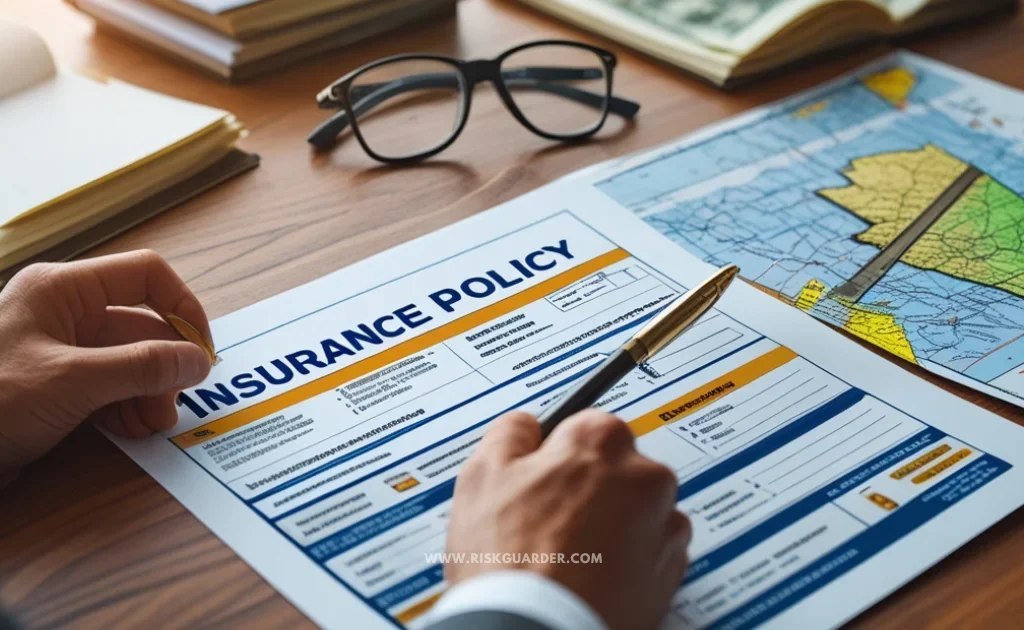
Filing with your own collision coverage? You’re dealing with the company you’ve been paying. That’s actually good for you. They have to treat you fairly (it’s in your contract), and you can use all those policy clauses and dispute processes we talked about. You’re their customer, which gives you some leverage.
Filing against the other driver’s insurance? Now you’re dealing with a company that doesn’t owe you anything. They’re looking out for their customer (the person who hit you), not you. It’s way more adversarial. But here’s a pro tip: you can often file with your own collision coverage first, pay your deductible, and let YOUR insurance go after THEIR insurance to get the money back. It’s usually faster and way less of a headache.
One more thing—if the person who hit you doesn’t have enough coverage, you’re kinda screwed unless you have underinsured motorist coverage. Like if your car’s worth $25K but they only have $15K in coverage, where’s that other $10K coming from? Your own underinsured coverage if you’ve got it, or you might have to sue them personally (which, good luck collecting).
Understanding all this helps you pick the smartest path through the claims maze.
When to Seek Professional Help
Look, you can handle a lot of this yourself. But sometimes? You need backup.
Get professional help if your insurance company’s being shady—refusing to show you their math, making ridiculously low offers with no explanation, or just dragging their feet forever. If you’ve got a high-value car (luxury, exotic, classic) where we’re talking tens of thousands of dollars in difference, a pro can more than pay for themselves. Or if you’re facing that awful upside-down loan situation with no gap insurance and it’s gonna wreck you financially, an attorney might have options you don’t know about.
Public adjusters work on commission—usually 10-15% of whatever extra money they get you. So if your claim’s $20K and they squeeze out another $5K, you pay them maybe $500-750 but still pocket an extra $4K+. Not bad. Insurance lawyers often do free consultations too, so at least find out if you’ve got a case.
The Arizona Department of Insurance (azinsurance.gov) is also there if you think your insurer’s breaking rules or acting in bad faith. They can’t force a specific settlement, but sometimes just having them involved makes insurance companies behave better.
Frequently Asked Questions
What is the total loss threshold in Arizona?
There isn’t one fixed percentage. It’s all about that formula—repairs + salvage value vs. your car’s value. So it’s different for every car based on what it’s worth and how bad the damage is.
Can I keep my totaled car in Arizona?
Yep! They’ll subtract the salvage value from your payout, slap a salvage title on it, and it’s yours. But you’ll need to fix it up and pass an ADOT inspection to get a rebuilt title before you can legally drive it.
Who determines if a car is totaled in Arizona?
The insurance company makes the call based on their numbers. But you can fight it by challenging their math, doing your own research, or demanding that independent appraisal.
How do I fight a total loss settlement in Arizona?
Do your homework on what your car’s worth (KBB, NADA, local listings), document everything about your car’s condition, present your case in writing, invoke that appraisal clause if they won’t budge, escalate to management, and maybe get a lawyer for big disputes.
What’s the difference between salvage value and actual cash value?
ACV is what your car was worth before the crash. Salvage value is what the wreck’s worth now for parts. Big difference—like $20K vs. $6K.
Do I have to use the insurance company’s repair shop?
Nope. You can get estimates wherever you want. They might prefer their “network” shops, but that’s their problem, not yours.
What if I owe more than my car is worth?
Oof, that sucks. That’s being “upside down,” and you’re stuck paying the difference unless you’ve got gap insurance. Gap insurance is a lifesaver for this exact situation.
How long does the total loss process take in Arizona?
If you take their first offer, maybe 2-3 weeks. If you’re negotiating and fighting? Could be weeks or months. Depends how complicated it gets.
Taking Control of Your Total Loss Claim
Look, dealing with a totaled car when you’re already stressed from an accident is nobody’s idea of fun. But now you know Arizona’s total loss threshold and how the whole formula works, which puts you way ahead of most people.
The math is actually pretty straightforward—repair costs + salvage value vs. what your car was worth. Once you understand each piece and know how to research your car’s real value, you’re not just some clueless person they can push around. You’ve got leverage.
Remember, insurance companies are businesses trying to save money. That first offer? It’s just their opening move. They’re hoping you don’t know better. But now you do. Your research, your documentation, and your willingness to use that appraisal clause shows them you mean business.
Use that calculator we gave you. Follow those five steps. Reference that law (A.R.S. § 28-2091) if you need to sound official. And don’t be afraid to get professional help if the money’s serious enough.
Yeah, this whole process is stressful and annoying. But you’re not alone, and you’re definitely not helpless. With everything we’ve covered here, you can handle your claim like a boss and get the money you actually deserve. Your car was worth real money, and you’ve got every right to fight for it.
Now go get what’s yours! 💪

